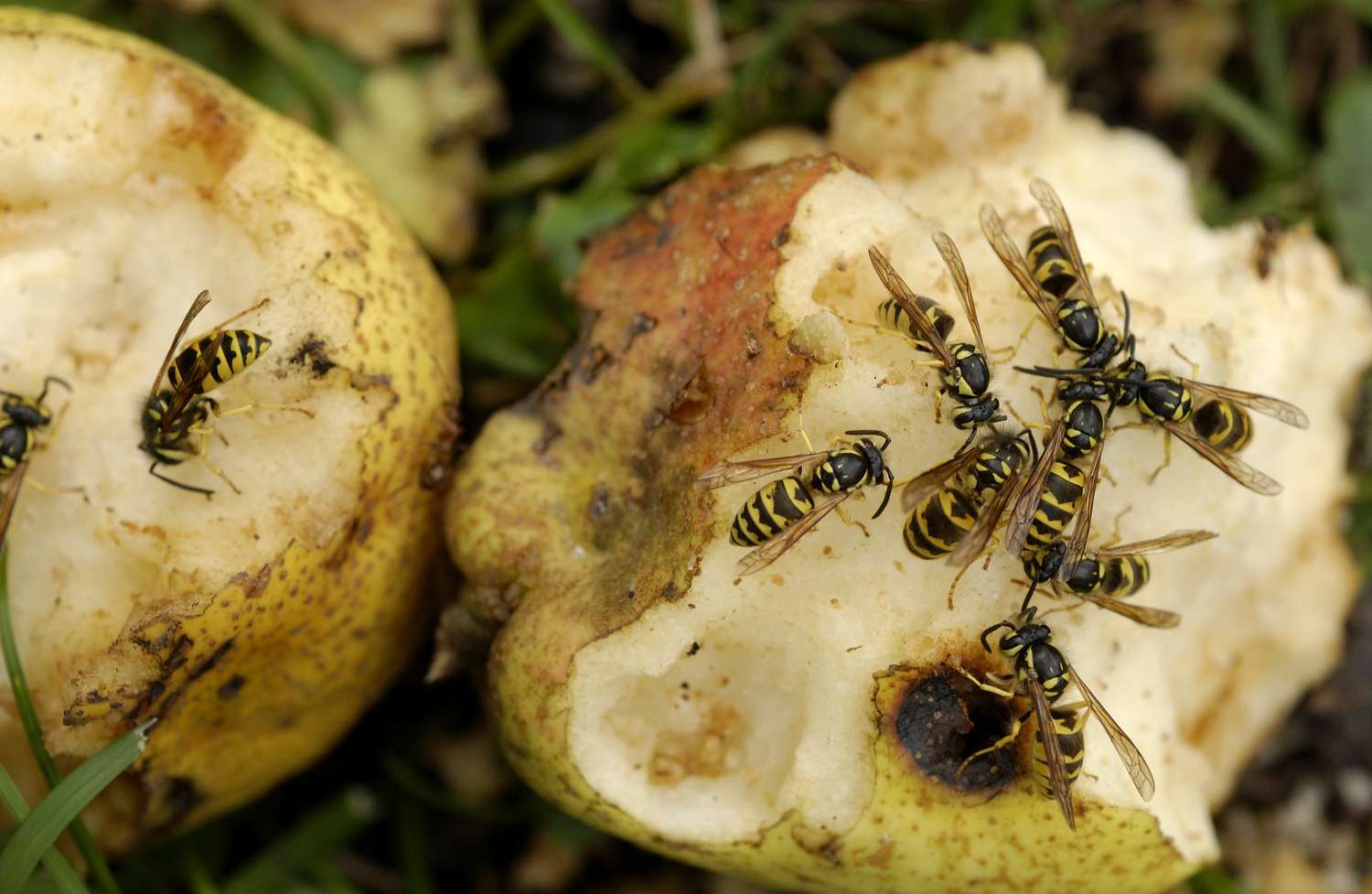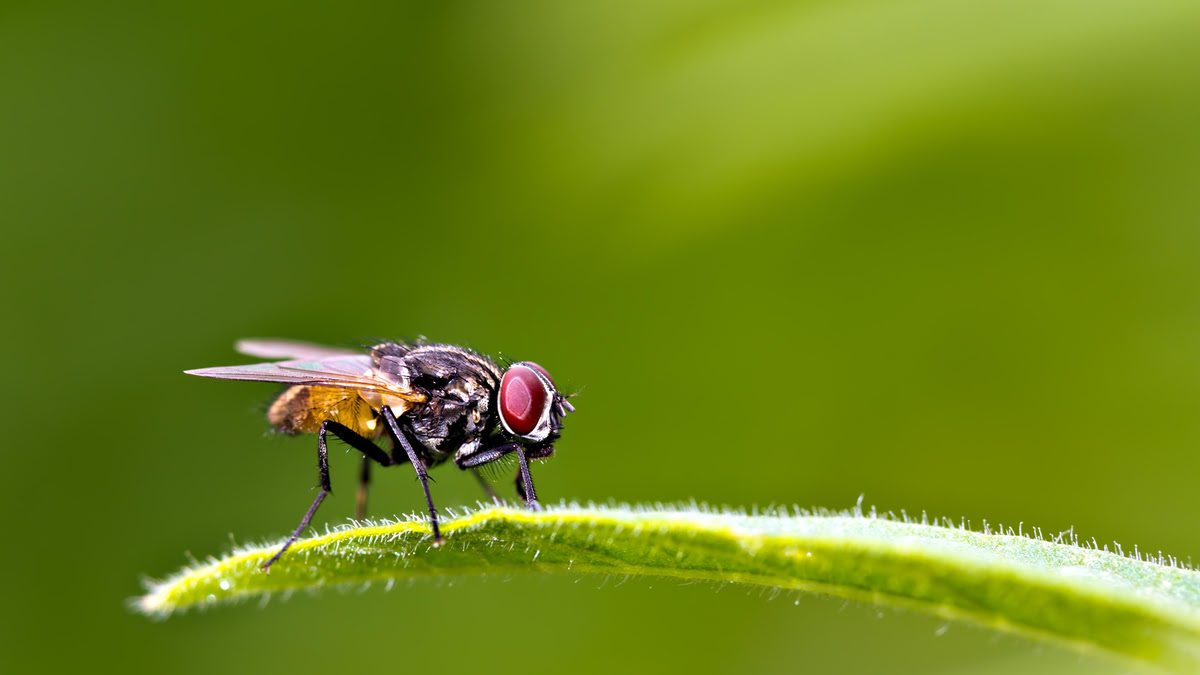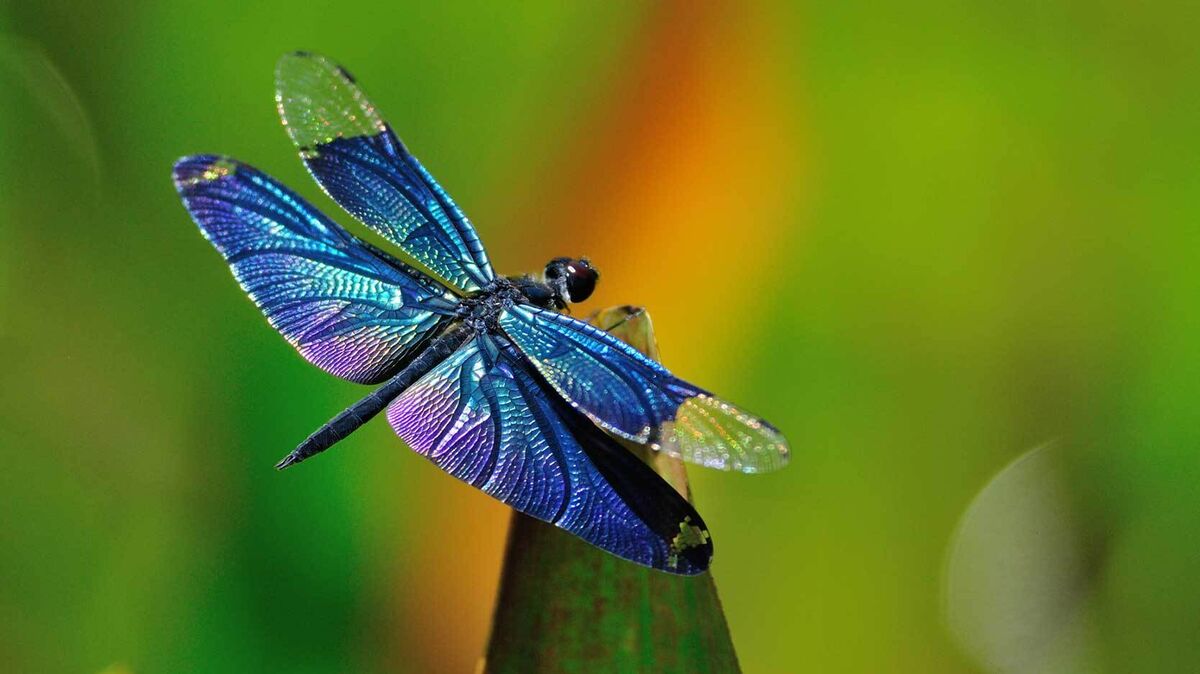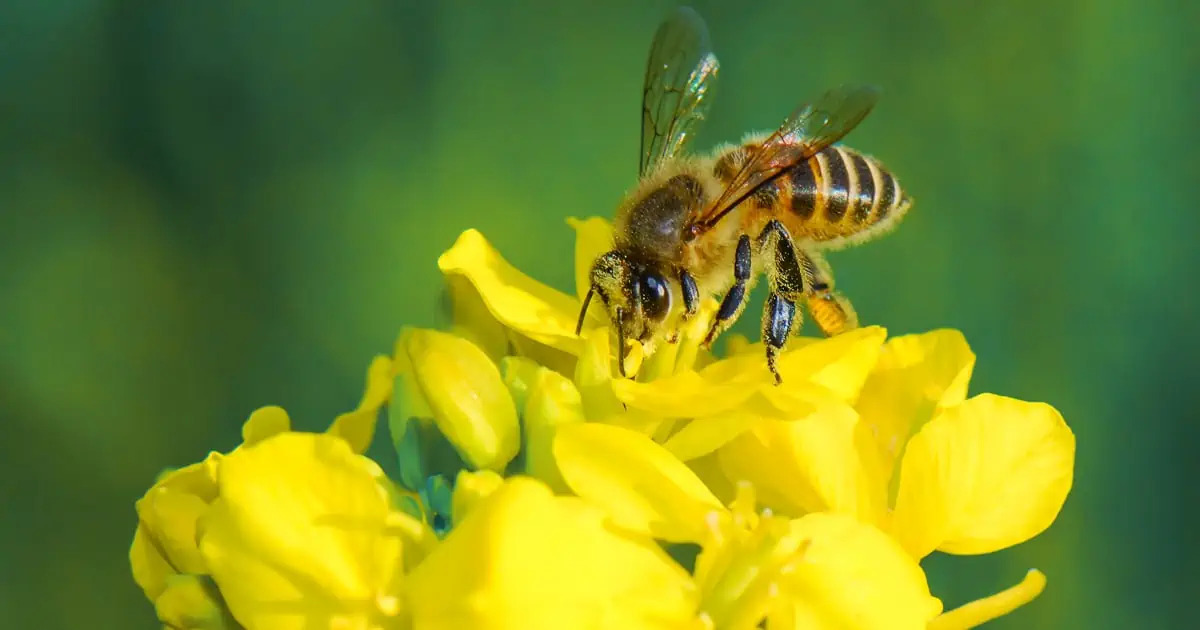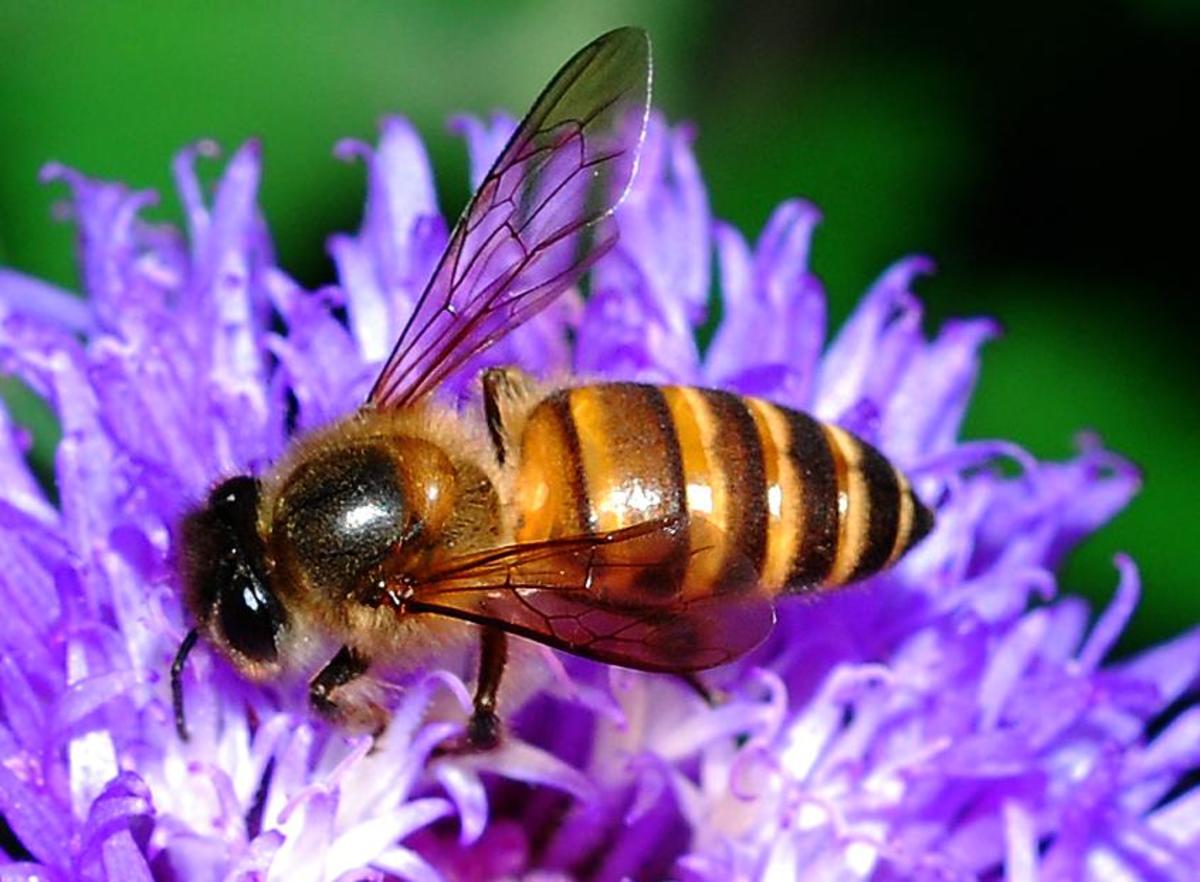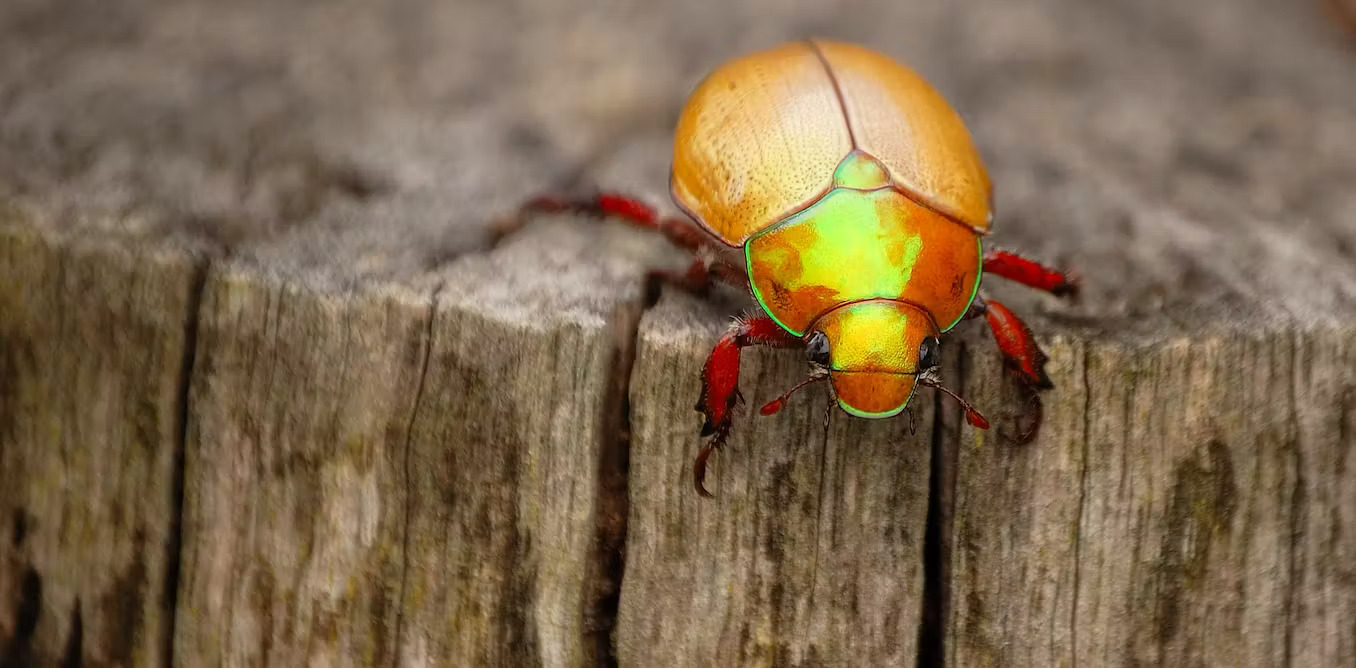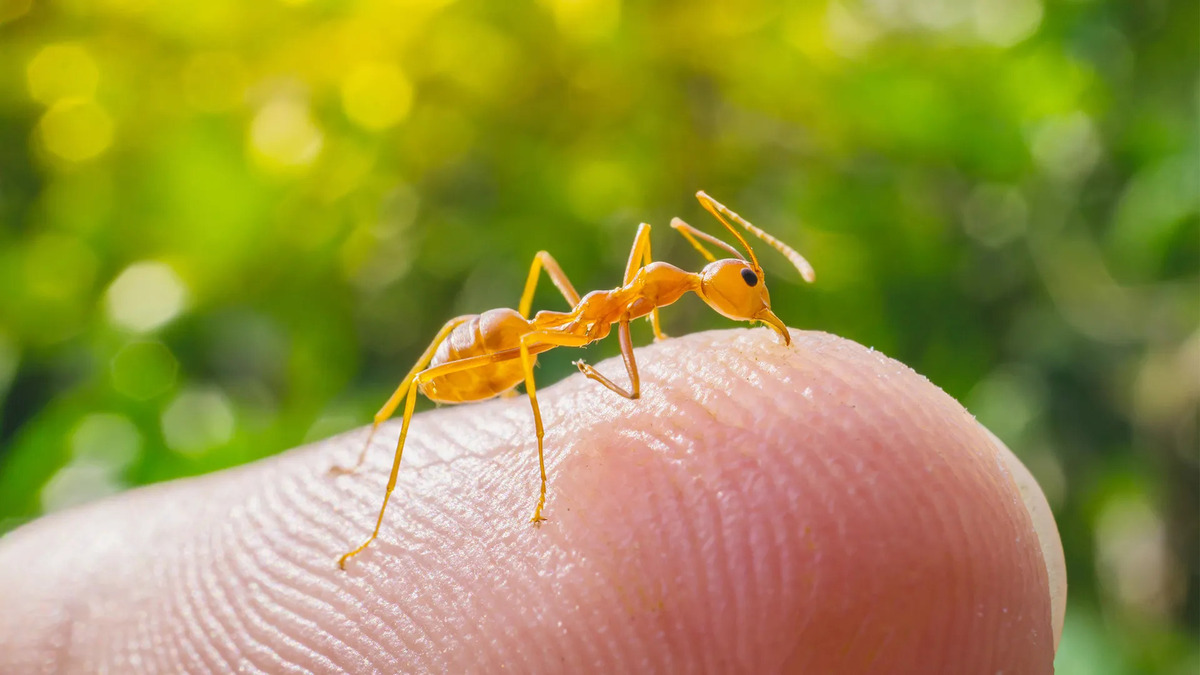Home>Gardening News and Trends>Latest News>How Do Insects Hear


Latest News
How Do Insects Hear
Published: December 3, 2023
Discover the latest news on how insects hear and the fascinating mechanisms behind their exceptional auditory abilities.
(Many of the links in this article redirect to a specific reviewed product. Your purchase of these products through affiliate links helps to generate commission for Chicagolandgardening.com, at no extra cost. Learn more)
Table of Contents
Introduction
From the delicate buzzing of a bee to the rhythmic chirping of crickets on a summer night, insects are surrounded by a world of sounds. But have you ever wondered how these tiny creatures actually hear? Insects have a remarkable ability to perceive sounds and communicate with each other using intricate auditory systems, often located in unexpected parts of their bodies.
The study of insect hearing, known as “acoustic communication,” has intrigued scientists for decades. This field of research aims to understand how insects process sounds, decode acoustic signals, and use them for survival, reproduction, and social interaction. By uncovering the mysteries of insect hearing, scientists can gain valuable insights into the evolution of auditory systems and potentially apply this knowledge to pest control, bio-inspired technology, and even to enhance our own hearing abilities.
In this article, we will delve into the fascinating world of insect hearing and explore the anatomy, mechanisms, and adaptations that allow insects to excel in acoustic communication. We will also discuss the challenges and limitations faced by scientists in studying insect hearing, as well as the potential implications of this research.
Anatomy of Insect Ears
While humans have ears located on the sides of their heads, insect ears are often located in seemingly unconventional places. In fact, some insects have ears on their legs, thorax, or even abdomen. The diverse locations of their auditory organs reflect the wide range of species-specific adaptations that have evolved over millions of years.
One common type of insect ear is the tympanal organ, which functions similarly to a human eardrum. Tympanal organs consist of a thin membrane, known as the tympanum, that vibrates in response to sound waves. The vibrations are then transmitted to sensory neurons that convert them into electrical signals, which are sent to the insect’s brain for processing.
The exact structure and location of insect ears vary across species. For example, mosquitoes have antennae that double as hearing organs, with specialized sensory cells that can detect even the slightest movements generated by sound. Grasshoppers, on the other hand, have ears on their thorax, which consist of two parallel membranes connected by nerve cells. This arrangement allows them to detect high-frequency vibrations, such as the calls of potential mates or predators.
Other insects, like moths and butterflies, have ears on their body, located on specific regions of their wings or abdomen. These ears, called chordotonal organs, consist of stretchable membranes connected to sensory cells. When sound waves reach these membranes, they cause them to vibrate, triggering sensory cells to transmit electrical signals to the central nervous system.
Although the anatomical structures of insect ears differ, they all share a common purpose: to detect and process sound waves. These adaptations allow insects to sense a wide range of sounds, from the softest vibrations to the loudest of calls, which play a crucial role in their survival and communication.
Mechanisms of Insect Hearing
Insects possess various mechanisms that enable them to hear and differentiate between different sounds in their environment. These mechanisms involve both the physical structures of their ears and the neurophysiological processes that occur in their sensory systems.
One primary mechanism of insect hearing is the detection of sound vibrations through their tympanal organs or chordotonal organs. When sound waves reach the insect’s ears, the vibrations cause the sensory membranes to vibrate, which in turn stimulates sensory cells or neurons. These sensory cells convert the mechanical energy of the vibrations into electrical signals, which are then transmitted to the central nervous system for processing.
Another important mechanism is the ability of insects to filter and discriminate between different frequencies of sounds. Insects often possess specialized receptors that are tuned to specific frequency ranges, allowing them to selectively respond to particular acoustic signals. This specialization enables them to distinguish between different types of sounds, such as mating calls, predator warning signals, or even the vibrations produced by their prey.
Furthermore, insects exhibit remarkable sensitivity to changes in sound intensity. Even the slightest variations in volume can have significant impacts on their behavior and reactions. For instance, female mosquitoes can locate male mosquitoes from a distance by detecting the wingbeat frequency and intensity of the males’ flight. Similarly, crickets and grasshoppers use the intensity of a male’s chirping as an indication of his fitness and suitability as a mate.
Interestingly, some insects, like many species of bees, can detect sounds at ultrasonic frequencies that are beyond the range of human hearing. This unique ability allows them to communicate and navigate in ways that are imperceptible to us.
The mechanisms of insect hearing are remarkably sophisticated, allowing these tiny creatures to perceive and interpret sounds with great precision. Their auditory systems have evolved to suit their specific ecological and social needs, enabling them to thrive in diverse environments.
Acoustic Communication in Insects
Sound plays a vital role in the lives of insects, as they rely on acoustic communication to convey important messages to potential mates, mark territories, warn of predators, and coordinate their behaviors within social groups. This form of communication, known as acoustic signaling, involves the production and detection of specific sounds that carry meaningful information.
Mating calls are one of the most well-known examples of acoustic communication in insects. Male insects use their specialized organs, such as stridulatory wings or vibrating abdomens, to produce distinct sounds that attract females. These mating calls are often species-specific, enabling females to locate and choose appropriate mates from a cacophony of sounds in their environment. Crickets, for instance, produce a chirping sound by rubbing their wings together, while male fireflies emit rhythmic flashes of light and sound to attract females.
In addition to mating calls, insects also use acoustic signals to defend territories and repel rivals. For example, male treehoppers produce distinct vibrations that serve as territorial markers, warning other males to stay away. These signals can also communicate information about the male’s strength and competitiveness, influencing the outcome of aggressive encounters.
Some insects have evolved fascinating forms of acoustic communication in the context of social behaviors. Ants, bees, and wasps, for instance, use vibrational signals to coordinate activities within their colonies. They communicate information about food sources, potential threats, and even the location of their nests through specific patterns of vibration produced by their bodies or by tapping on surfaces. This sophisticated communication system allows them to work together efficiently, maximizing their chances of survival and success.
Acoustic communication is not limited to the insect world either. Insects also play a crucial role in the acoustic landscape of their ecosystems. The rhythmic chirping of crickets, the buzzing of bees, and the songs of cicadas create a unique auditory environment that influences the behavior and interactions of other organisms, including birds, mammals, and even humans.
Understanding the intricacies of acoustic communication in insects not only offers insights into their evolutionary biology but also provides opportunities for practical applications. For example, by decoding and manipulating insect sounds, scientists and pest control experts may be able to develop new methods for insect detection, monitoring, and pest management.
In summary, acoustic communication in insects is a fascinating and diverse phenomenon that encompasses a wide range of behaviors and adaptations. Through the use of specialized signals and sensory systems, insects engage in complex communication, allowing them to navigate their environments, find mates, establish territories, and interact effectively within social groups.
Neurophysiology of Insect Hearing
The neurophysiology of insect hearing involves the intricate processes by which the sensory cells in their ears convert sound vibrations into electrical signals and transmit them to the central nervous system for interpretation.
When sound waves reach the insect’s ears, they cause the sensory cells in the auditory organs to vibrate. These sensory cells are equipped with specialized structures called mechanoreceptors, which detect the mechanical energy of the vibrations and convert it into electrical signals.
These electrical signals are then transmitted through the sensory neurons, which are connected to the sensory cells. These neurons relay the signals to specific regions within the insect’s brain, where they are further processed and decoded.
The neurophysiology of insect hearing also involves the phenomenon of frequency tuning. Insects have specific sensory cells that are tuned to detect particular frequency ranges of sound. This selective tuning allows them to respond to specific acoustic signals, such as the mating calls of their own species or the warning signals of predators.
Furthermore, the central nervous system of insects plays a crucial role in deciphering and interpreting the information encoded in the electrical signals. Insects possess specialized neural circuits that are responsible for analyzing the temporal patterns, intensity, and frequency components of the sounds they perceive.
Studies have shown that different types of behaviors and responses in insects are elicited by specific patterns of neural activity. For example, certain neural patterns may trigger mating behaviors or initiate defensive responses to approaching predators.
The neurophysiology of insect hearing is not limited to simple sound perception. Insects also possess the ability to discriminate between different sound sources and localize the direction from which sounds originate.
This remarkable ability is achieved through a mechanism called sound localization, which relies on the comparison of sound signals arriving at different parts of the insect’s auditory system. The small time differences or intensity disparities between the sound waves reaching each ear allow the insect to determine the location of the sound source and react accordingly.
Overall, the neurophysiology of insect hearing is a complex process that involves the conversion of sound vibrations into electrical signals, their transmission through sensory neurons, and the subsequent decoding and interpretation in the central nervous system. Understanding these neurophysiological mechanisms provides valuable insights into the sensory capabilities and behaviors of insects in their acoustic environments.
Adaptations for Detecting Specific Sounds
Insects have evolved a wide range of adaptations that allow them to detect specific sounds in their environment. These adaptations enable them to differentiate between different types of sounds and respond appropriately to various acoustic stimuli.
One primary adaptation is the presence of specialized sensory structures or receptors that are finely tuned to specific frequencies or types of sounds. For example, male mosquitoes possess specialized antennae that can detect the characteristic frequency of the female’s wingbeat, allowing them to locate potential mates. Similarly, moths have hair-like structures on their antennae called sensilla, which are capable of detecting the ultrasonic frequencies emitted by predatory bats, helping them evade capture.
Some insects have developed complex mechanisms for fine-tuning their hearing abilities. For instance, certain species of katydids have a system called the “tympanal trachea,” which consists of a network of air tubes that enhance their ability to detect low-frequency sounds. This adaptation increases their sensitivity to the specific acoustic signals produced by their conspecifics.
Insects also utilize behavioral adaptations to optimize their hearing capabilities. For example, grasshoppers and crickets often elevate their bodies to a higher position when producing sounds, which helps to amplify and project their calls. This behavior enhances the efficiency of sound transmission, allowing them to communicate over long distances or in noisy environments.
Moreover, some insects have developed remarkable abilities to filter out background noise and focus on relevant acoustic signals. For instance, certain species of female parasitoid wasps have been found to adjust their hearing sensitivity to the specific frequency of the wingbeats of their host insects. This adaptation enables them to locate their hosts accurately amidst the cacophony of other sounds in their environment.
In addition to physiological and behavioral adaptations, some insects also rely on synergistic interactions between different sensory modalities. For example, certain species of cricket use both acoustic and vibrational cues to locate potential mates. By integrating the information from sound vibrations and the direction of sound waves, they can accurately pinpoint the source of the sound and respond accordingly.
These various adaptations for detecting specific sounds allow insects to thrive in diverse acoustic environments, enabling them to navigate their surroundings, communicate with each other, and avoid predation. The evolution of these adaptations showcases the remarkable versatility and complexity of insect auditory systems.
Challenges and Limitations in Studying Insect Hearing
Studying insect hearing presents numerous challenges and limitations due to the small size and intricate nature of these organisms’ auditory systems. These challenges can make it difficult for researchers to fully understand the complexities of insect hearing and unravel the mysteries of their acoustic communication.
One of the main challenges in studying insect hearing is the variability and diversity of auditory systems across different species. Insects have evolved a wide array of specialized adaptations for detecting and processing sounds, making it challenging to generalize findings from one species to another. Each insect species may have unique structures and mechanisms that require specific experimental approaches and techniques.
Another challenge is the tiny size of insect auditory organs, which often requires highly sophisticated microscopic or imaging techniques to visualize and analyze. These structures can be delicate, making them susceptible to damage during dissection or experimentation. Obtaining a clear and detailed view of these structures is crucial for understanding their function and connectivity within the sensory system.
Furthermore, insects often inhabit diverse and complex environments, which can introduce noise and interference in their acoustic signaling and perception. Background noise and the presence of other organisms can make it challenging to isolate and study specific acoustic signals. This complexity requires researchers to design experiments that can effectively control for environmental factors and isolate the influence of specific sounds on insect behavior.
In addition, studying insect hearing in their natural habitats can be challenging due to the limitations of observation and experimentation in these environments. Researchers may face difficulties in collecting and maintaining live specimens, as well as the need for specialized equipment to accurately measure and manipulate acoustic stimuli in natural settings.
Furthermore, our understanding of insect hearing is largely limited to a few well-studied species. The vast majority of insect species have yet to be thoroughly investigated, leaving many questions unanswered regarding their auditory systems and acoustic communication. Expanding research to a broader range of insects can provide valuable insights into the diversity and evolution of insect hearing.
Despite these challenges and limitations, researchers continue to make significant discoveries in the field of insect hearing. Technological advancements, such as the development of miniaturized sensors and high-resolution imaging techniques, are helping to overcome some of these challenges and provide new opportunities for studying insect hearing in more detail.
Overall, while studying the intricacies of insect hearing presents various challenges and limitations, researchers are continuously striving to unravel the mysteries of this fascinating aspect of insect biology. By overcoming these challenges, we can deepen our understanding of acoustic communication in insects and gain insights into the broader fields of sensory perception and communication.
Conclusion
The study of insect hearing offers a captivating glimpse into the complex and diverse world of acoustic communication. Through specialized adaptations and mechanisms, insects have evolved the ability to perceive and interpret sounds in their environment, allowing them to communicate, find mates, mark territories, and coordinate their behaviors.
The anatomy of insect ears, with their unconventional locations and structures, showcases the remarkable diversity of adaptations that have evolved over millions of years. From tympanal organs and chordotonal organs to specialized receptors and neurophysiological processes, insects have developed sophisticated auditory systems that allow them to detect specific sounds and respond accordingly.
Acoustic communication plays a vital role in the lives of insects, providing them with the means to attract mates, establish territories, warn of predators, and coordinate social behaviors within colonies. Through their unique acoustic signals and behavioral adaptations, insects have honed their ability to transmit and receive meaningful information through sound waves.
Although the study of insect hearing presents challenges and limitations, such as the variability of adaptations across different species, the intricate nature of auditory structures, and the complexities of studying insects in their natural environments, researchers continue to make significant strides in unraveling the mysteries of insect hearing.
By understanding the neurophysiology of insect hearing, researchers can gain insights into the sensory capabilities of these tiny creatures and explore bio-inspired applications for human technology. Furthermore, the study of insect hearing contributes to our broader understanding of sensory perception, communication, and the evolutionary adaptations that have shaped life on Earth.
In conclusion, the study of insect hearing provides a remarkable window into the intricacies and wonders of the natural world. Through their remarkable adaptations and abilities, insects have mastered the art of acoustic communication, allowing them to navigate their environments, find mates, and survive in an intricate auditory landscape that is often imperceptible to our own senses. The continued study of insect hearing promises to unveil further insights into the fascinating world of insect behavior, biology, and the mechanisms that drive their interactions through sound.
